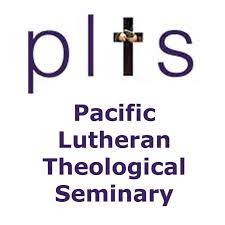To Eat No-Kill Cultivated Meat
Part Two: Is no-kill cultivated meat kosher?
An Interview with Sam Shonkoff

Is no-kill cultivated meat kosher?
In Part One of “To Eat No-Kill Cultivated Meat,” we announced the publication of the September 2022 issue of Pax Lumina. The magazine theme? “Global Food Crisis and Food Justice.” Within this issue, we–Brian Brosovic and Ted Peters–placed our article, “To Meet Cultivated Meat.” With the prospects of a new globe wide market for no-kill cultivated meat products, we could envision a scenario including a drastic reduction if not elimination of grazing pasture lands, methane gas pollution, and slaughter houses. Here in Patheos, we would like to extend that conversation by obtaining responses, especially religious responses. In this post we will ask our Berkeley colleague in Jewish Studies at the GTU, Sam Shonkoff: “is cultivated meat kosher?”
But first, what is the science? Genetic engineering provides the science of meat. Then, the technology of meat leads to production. Yet to be dealt with are the economics of meat and the ethics of meat.
Briefly, what is the science of no-kill cultivated meat?
Here is a very brief summary of the science of cultivated no-kill meat.
- Animal cells are sourced via a biopsy technique from either a live or recently slaughtered animal. These cells will be self-renewing in the laboratory setting. So, once an initial sample of cells is taken, there are no additional needs for a live animal. Different types of cells can be taken based on the overall needs and applications (meat, fat, connective tissue, specific organs, etc.) for those cells.
- Those cells taken for self-replication are brought into a lab environment, where they are introduced to a growth medium to supply needed nutrients. The starter period of growth and replication begins. In this phase, the cells are “retrained” and “reprogrammed” using gene editing techniques to produce the exact type of cells desired.(Ito, 2017) (Wu, 2017) As we saw in Part One, at least one company in Israel uses fibroblasts rather than embryonic stem cells.
- An initial collection of starter cells is introduced to a bioreactor to continue growth in a highly controlled environment (time, temp, oxygen levels, pH, etc.). They are carefully nourished with a proprietary growth medium that can include glucose, inorganic salts, water soluble vitamins, amino acids, recombinant proteins, growth factors, hormones, lipids, and antioxidants. In some proprietary blends, FBS (Fetal Bovine Serum) is used in the medium, but that requires a sample from a fetal bovine. So, some companies are now using techniques that are able to gather the needed growth factors using all plant-based sources, such as algae, fungi, and microorganisms.
- These cell colonies grow and form collections of tissue called a biomass. The biomass is often combined with an extracellular scaffolding (think watermelon structure, cellulose) to create a bulk tissue. This bulk form of biomass becomes a steak. Biomass can be combined with plant-based proteins to create hybrid products.
- After this harvesting, products are packaged and distributed for consumption.
What is revolutionary is that what we put on the dinner table did not require the sacrifice of an animal. Yet, we are eating meat in a form that readies us for nourishing new recipes.
When restaurants compete for customers with attractive new recipes, the worldwide market will grow. Production will rise to scale. The gross number of animals worldwide will decrease. Prices will drop. Protein rich products will become increasingly available for low-income peoples. Indirectly, food justice goals will be approached.

The Public Theologian Asks: “but is it kosher?”
It is time for the public theologian to inquire: how will those for whom dietary laws and practices are religiously based consider cultivated meats? (Peters, 2018)
In Part One of “To Eat No-Kill Cultivated Meat,” recall, we quoted Israel scientist Yaakov Nahmias of Believer Meats (formerly Future Meat Technologies). Dr. Nahmias makes his cultivated meat from fibroblasts rather than stem cell colonies. Furthermore, it’s important to note that these fibroblasts are drawn from discarded tissue taken from an animal that was slaughtered in a kosher process (Heb. שחיטה). They are not drawn from a living animal. This ensures that the meat produced would be both kosher and halal. The process of taking the cells only happens only once. No other contact with animals or their ingredients occurs during the manufacturing process of cultured meat. Even if “no-kill” does not obtain here, kosher does. At least according to Nahmias.
Let’s raise the question–is cultivated meat kosher?–with our colleague at the GTU, Sam S.B. Shonkoff , Taube Family Assistant Professor of Jewish Studies.
-
Is cultivated meat kosher? What are the issues surrounding “kosher” that might be relevant to this question?

Sam Shonkoff. There are various debates among scholars of Jewish law on the topic of kashrut and cultivated meat. In short, for meat to be kosher it must be (1) from a type of animal that is permitted to eat and (2) from an animal who was slaughtered according to Rabbinic laws. Some commentators would add that the living conditions of the animal and the human labor conditions surrounding the animal prior to slaughtering must also reflect Rabbinic laws and values. For cultivated meat to be kosher, it would still need to be from a permitted type of animal, especially since the cells were derived from the actual flesh of an animal (however minimally invasive or violent that process was). The question of how the animal was slaughtered is, of course, no longer relevant [in the case of no-kill cultivated meat]—and yet some commentators will raise questions about this very fact. For example, if Jewish law prescribes certain methods of slaughter, does a total lack of slaughter create ambiguous conditions for deeming whether or not the meat is definitively kosher?
-
What is your own position on cultivated meat? Would you eat a burger or roast from this source?
Sam Shonkoff. I sure would! Personally, as a pescatarian, I do not eat any land animals due to ethical and environmental concerns. However, I would eat cultivated meat.
-
Now, what about cultivated pork?

Sam Shonkoff. Even cultivated bacon would be unkosher insofar as its substance was derived at some point from the flesh of a pig. A more interesting and complicated question is whether, say, plant-based, “imitation” bacon would be kosher. On one hand, it should be OK because it is not actually pork. On the other hand, questions of appearance and room for error are not irrelevant. For example, according to Jewish law, one is not permitted to put cheese on chicken—not because that milk could have possibly come from the mother of that bird (!), but because a community member passing by might think mistakenly that the eater is violating laws of kashrut and/or the eater themself might mistakenly mix dairy and the wrong meat. This reflects a general trend in Rabbinic practice to “build a fence around the law.”
What’s Next?
We can see that an answer to our question–is cultivated meat kosher?–does not depend on whether or not the animal is slaughtered. Rather, it depends on which animal.
What’s next? We’ll ask Rita Sherma to tell us what Hindus and Jains might think. Then, we’ll ask Lincoln Cannon to tells us what Mormons might think. Get ready to click.
Here is an illuminating video from TED.
Which is better for you: real meat or fake meat?
Authors
 Brian Brozovic is a student at Pacific Lutheran Theological Seminary and Ted Peters is an emeritus professor at Pacific Lutheran Theological Seminary in Berkeley, California, USA. Visit Professor Peters’ Patheos column on Public Theology: https://www.patheos.com/blogs/publictheology/ .
Brian Brozovic is a student at Pacific Lutheran Theological Seminary and Ted Peters is an emeritus professor at Pacific Lutheran Theological Seminary in Berkeley, California, USA. Visit Professor Peters’ Patheos column on Public Theology: https://www.patheos.com/blogs/publictheology/ .
References
Ito, N. I. (2017). Direct reprogramming of fibroblasts into skeletal muscle progenitor cells by transcription factors enriched in undifferentiated subpopulation of satellite cells. Sci Rep 7:8097, https://doi.org/10.1038/s41598-017-08232-2.
Peters, T. (2018). Public Theology: Its Pastoral, Apologetic, Scientific, Politial, and Prophetic Tasks. International Journal of Public Theology 12:2, 153-177; https://brill.com/abstract/journals/ijpt/12/1/ijpt.12.issue-1.xml.
Specht, E. D. (2018). Opportunities for applying biomedical production and manufacturing methods to the development of the clean meat industry. Biochemical Engineering Journal 132, 161-168. doi.org/10.1016/j.bej.2018.01.015.
Thompson, P. (2020). Food Biotechnology in Ethical Perspective, 3rd ed. Heidelberg: Springer.
Wu, W. Y. (2017). Directly reprogramming fibroblasts into adipogenic, neurogenic and hepatogenic differentiation lineages by defined factors. Exp Ther Med 6, 2685-2690. . doi: 10.3892/etm.2017.4365. Epub 2017 Apr 20. PMID: 28587331; PMCID: PMC5450766.


















